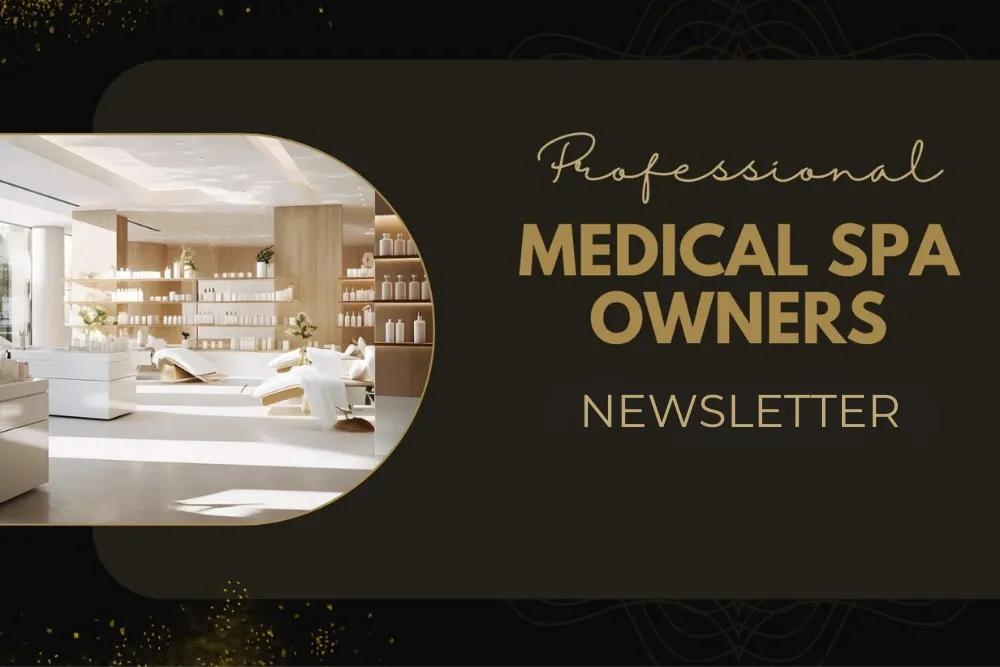
How to Add Good Faith Exams Without Slowing Down Your Med Spa
Running a successful medical spa means juggling countless responsibilities while ensuring every aspect of your operation runs smoothly. From managing staff schedules to staying compliant with ever-changing regulations, the last thing you need is another administrative burden that disrupts your carefully orchestrated workflow. Yet, if you're operating in a state that requires good faith exams, this compliance requirement has likely become one of your biggest operational headaches.
The reality is stark: good faith exams are non-negotiable in many jurisdictions, but implementing them often feels like throwing a wrench into your spa's efficiency. You've probably experienced the frustration firsthand, clients waiting longer for treatments, staff scrambling to coordinate with physicians, and revenue opportunities slipping away because the process feels too cumbersome to manage effectively.
But what if implementing good faith exams didn't have to slow down your med spa? What if this compliance requirement could actually become a seamless part of your operation that enhances rather than hinders your client experience?
Understanding the Good Faith Exam Challenge
The good faith exam requirement exists for important medical and legal reasons, but its implementation often creates significant friction in med spa operations. This requirement mandates that a qualified physician must examine patients before certain aesthetic treatments, establishing a legitimate doctor-patient relationship and ensuring appropriate medical oversight.
For med spa owners, this translates into a complex logistical puzzle. You need to coordinate physician availability with client appointments, manage additional documentation, and ensure the exam process doesn't create bottlenecks that frustrate clients or reduce your daily treatment capacity. Many spa owners find themselves caught between compliance necessity and operational efficiency, often feeling forced to choose between following regulations and maintaining smooth business operations.
The challenge becomes even more pronounced when you consider the typical med spa client experience. Your clients expect convenience, efficiency, and minimal wait times. They've chosen your spa partly because it offers a more streamlined experience than traditional medical settings. When good faith exams are poorly integrated, they can disrupt this expectation and potentially drive clients to seek services elsewhere.
The Hidden Costs of Poor Implementation
When good faith exams aren't properly integrated into your workflow, the costs extend far beyond simple inconvenience. Consider the revenue impact of extended appointment times that reduce your daily treatment capacity. If implementing good faith exams adds even 15 minutes to each appointment, you're potentially losing multiple treatment slots per day, which compounds into significant revenue loss over time.
Staff productivity also suffers when the process isn't streamlined. Your aestheticians and support staff spend valuable time coordinating schedules, managing paperwork, and addressing client concerns about delays. This administrative burden reduces the time they can spend on revenue-generating activities and client relationship building.
Client satisfaction takes a hit when the exam process feels disjointed or poorly managed. Clients who experience long waits, confusion about requirements, or multiple appointment scheduling may choose not to return. In an industry where client retention is crucial for profitability, losing clients due to operational friction is particularly costly.
Perhaps most concerning is the compliance risk that comes with rushed or inadequately managed good faith exams. When you're trying to squeeze these requirements into an already packed schedule, there's increased risk of documentation errors, incomplete exams, or other compliance issues that could expose your business to regulatory problems.
Get a Good Faith Exam provider for your medical spa (click here)
Designing Workflow Integration
The key to successful good faith exam implementation lies in treating it as an integral part of your service delivery rather than an add-on requirement. This means redesigning your workflow to accommodate the exam seamlessly while maintaining the efficiency and client experience your spa is known for.
Start by mapping your current client journey from initial consultation through treatment completion. Identify natural integration points where the good faith exam can occur without disrupting the flow. For many spas, the most effective approach involves conducting the exam during what would traditionally be consultation time, combining medical assessment with treatment planning in a single, comprehensive session.
Consider implementing a tiered scheduling system that accounts for different appointment types. New clients requiring good faith exams receive longer appointment slots that include adequate time for both the medical assessment and treatment planning. Returning clients who've already completed their exams can maintain shorter appointment windows focused primarily on treatment delivery.
Technology integration plays a crucial role in streamlining this process. Digital forms and pre-appointment questionnaires can gather necessary medical history information before clients arrive, allowing the physician to review relevant details in advance. Electronic health records systems can track exam completion status, ensuring compliance while providing easy access to necessary documentation.
Staff training becomes essential for smooth implementation. Your team needs to understand not just the procedural requirements but also how to communicate the value of good faith exams to clients. When staff can explain the medical benefits and legal protections these exams provide, clients are more likely to view them as valuable rather than burdensome.
Leveraging Technology for Efficiency
Modern technology offers numerous solutions for streamlining good faith exam processes without sacrificing quality or compliance. Practice management software can automate much of the scheduling coordination, ensuring physician availability aligns with client appointments while maintaining optimal booking efficiency.
Telemedicine capabilities can expand your options for conducting good faith exams, particularly for follow-up assessments or clients who've established relationships with your medical director. While initial exams typically require in-person evaluation, subsequent assessments for ongoing treatments may be conducted virtually, reducing scheduling constraints and improving convenience for both clients and physicians.
Digital documentation systems eliminate much of the paperwork burden associated with good faith exams. Electronic forms can be completed by clients before their appointments, automatically populating medical records and ensuring all necessary information is captured. Digital signatures and consent processes further streamline the administrative aspects while maintaining proper documentation standards.
Automated reminder systems can help ensure clients understand exam requirements before arriving for appointments. Clear communication about what to expect, how long the process will take, and what documentation they need to bring reduces confusion and helps appointments run more smoothly.
Integration with your existing spa management software ensures that good faith exam requirements are automatically flagged for appropriate appointments. This prevents scheduling errors and ensures compliance requirements are never overlooked, even during busy periods.
Creating Value-Added Experiences
Rather than viewing good faith exams as a compliance burden, successful med spas transform them into value-added experiences that enhance client relationships and potentially generate additional revenue. The exam provides an opportunity for comprehensive skin assessment and personalized treatment planning that goes beyond basic aesthetic concerns.
During the good faith exam, physicians can identify skin health issues, discuss preventive care strategies, and recommend complementary treatments that support overall skin wellness. This medical perspective adds credibility to your spa's services and positions your team as comprehensive skin health experts rather than simply aesthetic service providers.
The exam also creates an opportunity for education and relationship building. Clients appreciate learning about their skin health, understanding the medical rationale behind recommended treatments, and feeling confident that their care is overseen by qualified medical professionals. This educational component often increases client confidence in your services and willingness to invest in comprehensive treatment plans.
Consider packaging good faith exams with complementary services like detailed skin analysis, personalized skincare consultations, or treatment planning sessions. This bundling approach helps clients see the exam as part of a comprehensive service rather than an isolated requirement, improving perceived value while maintaining compliance.
Documentation from good faith exams can also support ongoing client relationships by providing baseline assessments for tracking treatment progress and adjusting care plans over time. This medical documentation adds professionalism to your service delivery and supports more sophisticated treatment protocols.
Staff Training and Communication Strategies
Successful good faith exam implementation requires comprehensive staff training that goes beyond basic procedural knowledge. Your team needs to understand the medical and legal rationale behind these requirements so they can communicate confidently with clients about their importance and value.
Training should cover both the technical aspects of exam coordination and the communication skills needed to address client concerns. Staff members need to know how to explain exam requirements clearly, address common questions about timing and necessity, and position the exam as a valuable component of comprehensive care rather than a regulatory burden.
Role-playing exercises can help staff practice handling various client scenarios, from enthusiastic acceptance to reluctant compliance. When your team can address concerns confidently and professionally, the entire process runs more smoothly and clients feel more comfortable with the requirements.
Regular training updates ensure your team stays current with any regulatory changes or procedural improvements. This ongoing education also provides opportunities to refine processes based on real-world experience and client feedback.
Communication protocols should be established for various scenarios, including scheduling conflicts, physician availability issues, and client questions about exam necessity. When everyone knows how to handle these situations consistently, clients receive reliable information and experience fewer disruptions.
Get a Good Faith Exam provider for your medical spa (click here)
Managing Physician Relationships
The success of your good faith exam program depends heavily on effective collaboration with qualified physicians. Whether you work with an on-site medical director or contract with external physicians, clear communication and well-defined expectations are essential for smooth operations.
Establish clear protocols for physician availability, including regular schedules for exam appointments and procedures for handling urgent situations. Physicians need to understand your spa's operational requirements and client expectations, while you need to respect their medical expertise and professional obligations.
Compensation structures should align physician incentives with your operational goals. Whether you pay per exam, offer retainer arrangements, or provide other compensation models, the structure should encourage reliable availability and quality care while remaining financially sustainable for your business.
Regular communication between your spa management and medical staff helps identify potential improvements and address any operational challenges before they impact client experience. Monthly meetings or regular check-ins can help maintain alignment and address any concerns promptly.
Documentation standards should be clearly established and consistently followed. Physicians need to understand your record-keeping requirements while maintaining their professional standards for medical documentation. Clear protocols prevent confusion and ensure compliance with both medical and spa industry standards.
Measuring Success and Continuous Improvement
Implementing good faith exams successfully requires ongoing monitoring and refinement of your processes. Key performance indicators should include appointment efficiency metrics, client satisfaction scores, compliance documentation quality, and revenue impact analysis.
Track appointment duration to ensure good faith exams aren't unnecessarily extending treatment times. If exams are taking longer than expected, investigate whether additional training, process refinements, or technology solutions could improve efficiency without compromising quality.
Client feedback provides valuable insights into how the exam process affects overall satisfaction with your spa experience. Regular surveys or informal feedback collection can help identify areas for improvement and ensure clients view the exams positively rather than as inconvenient requirements.
Compliance audits should be conducted regularly to ensure documentation standards are being maintained and all regulatory requirements are being met consistently. These internal reviews help identify potential issues before they become problems and demonstrate your commitment to proper compliance.
Revenue analysis helps determine whether good faith exam implementation is impacting your bottom line positively or negatively. While initial implementation may temporarily reduce efficiency, well-executed programs often lead to increased client confidence, higher treatment acceptance rates, and improved retention over time.
Staff feedback is equally important for identifying operational challenges and improvement opportunities. Your team members are on the front lines of implementation and often have valuable insights into what's working well and what could be refined.
Financial Considerations and ROI
While implementing good faith exams requires initial investment in training, technology, and process development, the long-term financial benefits often justify these costs. Proper compliance reduces regulatory risk, which protects your business from potentially costly violations and legal issues.
Client retention improvements often result from the enhanced credibility and professionalism that proper medical oversight provides. Clients who feel confident in your medical standards are more likely to continue treatments long-term and refer others to your spa.
Treatment acceptance rates may increase when clients receive professional medical recommendations during their good faith exams. Physicians can identify additional treatment opportunities and provide medical rationale for comprehensive care plans that clients might not have considered otherwise.
Operational efficiency gains become apparent once processes are properly established and staff are fully trained. While initial implementation may slow operations temporarily, well-designed systems often result in smoother overall workflows and reduced administrative burden over time.
Insurance and liability considerations also factor into the financial equation. Proper medical oversight and documentation can potentially reduce liability insurance costs and provide better protection in case of adverse events or legal challenges.
Get a Good Faith Exam provider for your medical spa (click here)
Building Long-Term Compliance Culture
Sustainable good faith exam implementation requires building a culture of compliance throughout your organization. This means moving beyond viewing compliance as a necessary burden to embracing it as a competitive advantage that demonstrates your commitment to client safety and professional standards.
Leadership commitment is essential for creating this cultural shift. When spa owners and managers consistently emphasize the importance of proper compliance and provide necessary resources for implementation, staff members are more likely to embrace these requirements enthusiastically.
Regular training and education help maintain compliance awareness and ensure all team members understand their roles in maintaining proper standards. This ongoing education should cover not just procedural requirements but also the underlying reasons for these regulations and their importance for client safety.
Documentation of your compliance efforts demonstrates your commitment to regulatory authorities and provides protection in case of audits or investigations. Maintaining detailed records of training, process improvements, and compliance monitoring shows that your spa takes these requirements seriously.
Continuous improvement processes ensure your compliance programs evolve with changing regulations and operational needs. Regular review and refinement of your good faith exam procedures help maintain effectiveness while adapting to new challenges or opportunities.
Taking Action for Your Med Spa
The challenge of implementing good faith exams without disrupting your med spa's efficiency is real, but it's entirely manageable with the right approach and resources. The key lies in viewing compliance not as a burden but as an opportunity to enhance your service delivery and demonstrate your commitment to client safety and professional standards.
Success requires careful planning, proper training, and often some initial investment in systems and processes. However, the long-term benefits, including reduced regulatory risk, improved client confidence, and enhanced operational credibility, typically far outweigh these initial costs.
The most important step is getting started with a comprehensive plan that addresses your specific operational needs and regulatory requirements. Every day you delay implementation is another day of potential compliance risk and missed opportunities to enhance your client experience through proper medical oversight.
Don't let the complexity of good faith exam requirements continue to create stress and inefficiency in your med spa operations. With proper guidance and implementation support, you can transform this compliance requirement into a seamless part of your service delivery that actually enhances rather than hinders your business success.
Ready to eliminate the headache of good faith exam compliance while maintaining your spa's efficiency? Get the comprehensive guidance and implementation support you need to make this transition smooth and successful. Click here to access our Good Faith Exam implementation resources and discover how to turn this compliance requirement into a competitive advantage for your med spa. Take action today and transform your approach to good faith exam compliance, your future self will thank you for making this essential investment in your spa's success.
The time to act is now. Your clients deserve the confidence that comes with proper medical oversight, your staff deserves clear processes that make their jobs easier, and your business deserves the protection and credibility that comes with excellent compliance practices. Don't let another day pass wondering how to solve this challenge, get the solutions you need and start building the efficient, compliant med spa operation you've always envisioned.












